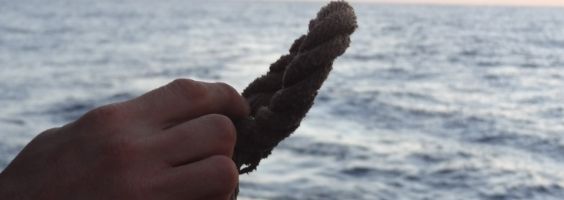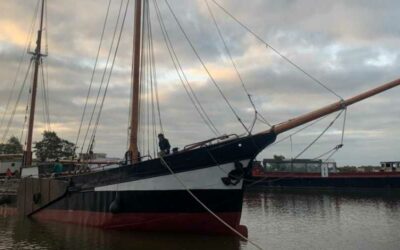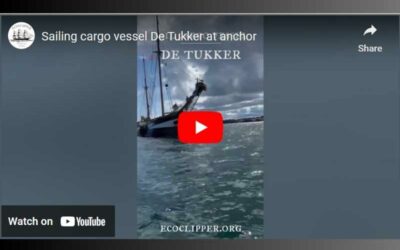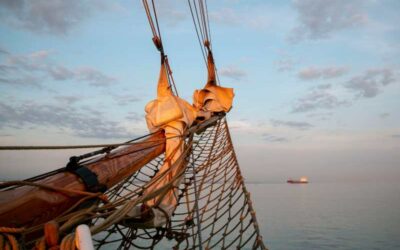Full circle
As EcoClipper’s first ship, De Tukker is undergoing inspection and being made ready to sail, it reminds me that history, just like ecology, is not linear but cyclic. Waking up to the fact that we cannot continue along our destructive ways, more and more people are actively seeking ways to do things better in terms of sustainability. The revival of transporting cargo by sail is waking up the history, legends and legacy of days gone by. The ocean is still the keeper of many mysteries…
First Watch’s tale of woe – a story
Down the ratlines we came, more dead than alive. Our fingers were bleeding and nails torn from fighting the thundering canvas aloft. The cold had penetrated our bones. The second watch took over as we stumbled to the galley for a mug of hot brew. The cook was a veteran who had started out as an able seaman in the merchant navy many years before. As the ship rolled heavily, he steadied himself with one hand on the bulkhead and said: “’Twas a night just like this one, boys…I spin you no yarn, I swear, when we encountered that cursed phantom ship of the southern latitudes…”
The Narrative
We humans can be described as a storytelling species. The art of storytelling has evolved over the ages from word of mouth to paintings on the cave wall to books and, finally, with the dawn of the tech age, to multimedia in all its present forms. We still tell our children bedtime stories and narrate everyday life events to friends and family. But let us be honest… stories of epic proportions are often told against the backdrop of the sea! Homer’s The Odyssey of ancient Greece, Kidnapped and Treasure Island from the pen of Robert Louise Stevenson and many others serve as examples. To understand the role of the sea in our stories better, we need to navigate the poorly chartered waters of man’s sub-conscience. The symbolic role of the ocean can represent chaos, the unfathomable or formlessness or, paradoxical, it can be a symbol of stability (always there through the ages) and freedom (no borders). The interplay between life-giving and life-taking makes the sea an immensely powerful symbol in mankind’s grappling to make sense of his existence.
Tales from Beyond
Tales of the paranormal are another click baiter. Combine the paranormal with a sea story and you are guaranteed to have a captive audience! Perhaps the most famous of this genre is the legend of the Flying Dutchman and its cursed crew who continue to sail until the end of time. This story has spawned countless variations on the theme, such as the recent movie Pirates of the Caribbean. But lest we get marooned on an island of superstition and tales of rum-soaked old salts in seedy taverns, let us shift the focus to the fairest Cape of them all, the Cape of Good Hope, where this story originated, and let’s see if we can find some historic evidence.
The Flying Dutchman
For anyone interested in sea lore, phantom ships make their appearance in different stories emerging from different nations. Of all of them, the tale of Vanderdecken and the Flying Dutchman is the best known. Wagner’s opera Der Flieginde Hollander helped to popularize the tale in the mid-1800s. On my bookshelf I have a collection of books by the South African Lawrence G Green, a news reporter, sailor, adventurer and prolific author on the history of shipping around the Cape of Good Hope during the early part of the twentieth century. In his book Almost Forgotten, Never Told, I turned to chapter fourteen titled Ghost Ships of the Cape for more information about the Flying Dutchman.
Different versions of the story exist but the most common has Vanderdecken trapped by foul weather in Table Bay, Cape Town during Easter. In a fit of rage, he orders the terrified crew to hoist the sails and sails off into the storm, cursing that not even God would prevent him from departing. According to the legend, the Holy Spirit appears and rebukes him and Vanderdecken, unrepentant, draws his pistol and fires. That seals the fate of the ship and Vanderdecken and his crew are doomed to sail forever until the end of time.
Keep an eye out for Part 2…




